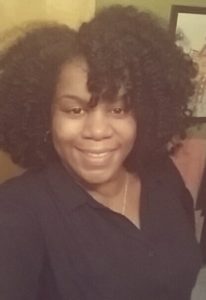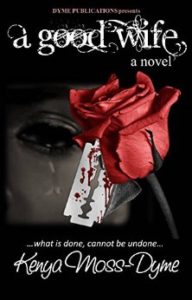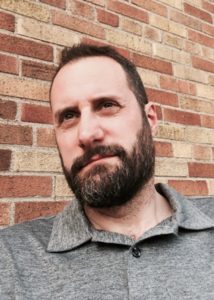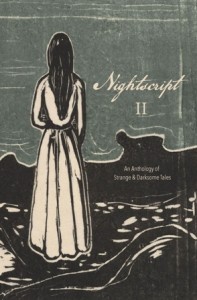Welcome back! This week, I’m pleased to spotlight the multi-talented Anya Martin. Anya is a writer of fiction, nonfiction, and comics, and she also serves as the associate producer of The Outer Dark.
Recently, Anya and I discussed her inspiration as a writer as well as her many upcoming projects, including Word Horde’s Eternal Frankenstein anthology.
A couple icebreakers to start: when did you first decide to become a writer, and who are some of your favorite authors?
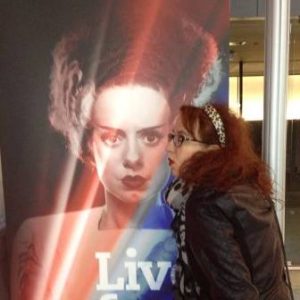 As a child, I was acting out stories in elaborate pretend games with stuffed animals, little dinosaurs and real-live little girls as long as I can remember. Note: never dolls. They always creeped me out. I drew picture books for my parents, and in elementary school, I was always writing plays—some of which were actually performed. I still thought I’d be a paleontologist or an archaeologist or an astronomer or an actress until high school, when I started realizing I could be a writer as an actual career and embarked on a never-completed epic fantasy novel packed with empowered female characters. Maybe one day I’ll return to it and really up the Weird.
As a child, I was acting out stories in elaborate pretend games with stuffed animals, little dinosaurs and real-live little girls as long as I can remember. Note: never dolls. They always creeped me out. I drew picture books for my parents, and in elementary school, I was always writing plays—some of which were actually performed. I still thought I’d be a paleontologist or an archaeologist or an astronomer or an actress until high school, when I started realizing I could be a writer as an actual career and embarked on a never-completed epic fantasy novel packed with empowered female characters. Maybe one day I’ll return to it and really up the Weird.
Favorite authors are always tough because it’s a moving feast. Right now I’m reading mostly contemporary Weird authors and there are so many I worry I’ll forget someone egregiously. So I’ll stick to a list of writers who impacted me in my formative writing years and who stuck with me: C.L. Moore, Fritz Leiber, William Hope Hodgson, Philip K. Dick, Ted Sturgeon, Octavia Butler, Isak Dinesen, James Joyce, James Baldwin, Ralph Ellison, Fyodor Dostoyevsky, Angela Carter, James Tiptree Jr., Ursula K. LeGuin, James Ellroy, Cormac McCarthy, Jack London, Tove Jansson, Samuel Beckett, Harry Crews, Olaf Stapledon, Margaret Atwood, Toni Morrison, Zora Neale Hurston, Federico García Lorca, Mary Shelley. I’m sure by the time I read this online I’ll be shooting myself for someone crucial I left out.
As a fiction author, a comic book writer, a podcast producer, and a blogger, you have such a fantastically eclectic career! How do you juggle such a wonderful and vast array of roles?
I wonder myself, though I should add my “pay-the-bills job” as a freelance journalist literally ate up all my fiction writing time and energy for many years. In the last few years, I lucked into a steady gig with a major national newspaper writing just one business article a week. Also I had a major life change which kicked me into gear that if I didn’t get serious about fiction, I’d never do it. I’d done some comics work in the ‘90s, but the opportunity to contribute to Womanthology, an amazing all-women comics anthology with about 160 writer and artist contributors, was really the jumpstart of this stage of my writing life. In keeping with the book’s “Heroic” theme, “Stuffed Bunny in Doll-Land,” was based on two of my real-life toys, and I was lucky to collaborate with Mado Pena, a kickass artist based in Barcelona. The summer/fall of 2012 became a kind of rock star jaunt across comic cons, and it was exciting to see all the fan enthusiasm for the project, but ultimately I decided the challenges for women in comics were sadly not commiserate with the pay rates. For now, I’m back to just prose though Mado and I have talked about extending the project into a full graphic novel or an illustrated book. We went so far as to launching a website dedicated to the project, so maybe it’ll happen one day.
The return to fiction gradually led me to discover a new home in the current vibrant Weird fiction community and meeting a lot of great writers including Scott Nicolay, the host of The Outer Dark podcast which features conversations with contemporary Weird and spec-lit writers, as well as publishing news. Scott and I have collaborated on a number of nonfiction endeavors and we share a commitment to promoting diversity in our literary community, so that organically evolved into me taking on my producer role. Scott does the interviews, recording and the audio editing which can be a real challenge in his rural location. I do the beta-listening, show notes, Web design and some big-picture marketing. As for my blog ATLRetro.com, about Atlanta things to do for people stuck in the 20th century (burlesque to rockabilly to classic movies), I still act as overall editor and occasional writer, but it now exists largely thanks to the hard work and dedication of a great managing editor Melanie Crew and writing staff.
You’ve written a great body of work as a short fiction writer. When you were growing up, was there a particular short story that made you think “I want to do that!”?
Hmmm, actually I was pretty intimidated by short stories growing up, and for a long time I thought, no, I couldn’t do that and was pretty dissatisfied with my short story attempts. I always thought there wasn’t enough space and I’d be better at novels, plays and movies—any kind of longer form. That being said, from a genre/weird standpoint, C.L. Moore really packed an incredible punch of dread-filled atmosphere, ill-advised romance, monsters and action into her stories. I know girls aren’t supposed to grow up loving monsters, but I preferred them to princes as far back as I can remember. I also liked fairy tales, the darker, disturbing, older versions. And Jirel was a female protagonist more badass than the male action heroes I grew up with such as Conan and Tarzan thanks to my First Fandom dad. Moore’s stories combined all that, so she seemed like she was almost writing for me personally. My dad gave me a copy of “Black God’s Shadow,” which collected all of Moore’s Jirel stories, sometime in my early high school. It’s hard to pick a favorite, but maybe “Black God’s Shadow,” the even darker, weirder sequel to the first Jirel story, “Black God’s Kiss.”
Speaking of short fiction, your story, “The Un-Bride, or No Gods and Marxists,” will be featured in the upcoming Eternal Frankenstein anthology from Word Horde. How did you become involved with the project, and what can you reveal about this particular story?
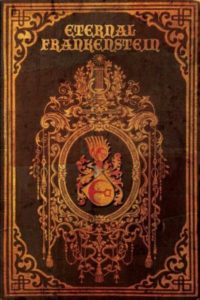 I’d placed two stories in Word Horde anthologies (“Sensoria” in Giallo Fantastique and “The Prince of Lyghes” in Cthulhu Fhtagn!) and both those times I just asked editor Ross Lockhart if I could submit, and he thankfully said yes. So I already had a history, but as I recall, this time he asked me while we were talking at a room party at the 2015 NecronomiCon. Mary Shelley’s Frankenstein had a big impact on me, and I’m also a big fan of the James Whale Universal movies. As soon as I found out about the project, I knew I wanted to write about Elsa Lanchester and make it a sort of “true”/alt-history story, but honestly I had no idea where the plot would go and if I could pull it off up until January when the deadline loomed ominously. I was reading through Elsa’s autobiography Elsa Lanchester Herself, jotting down odd notes, feeling really stressed about other stuff in my life and worried as Hell. I knew I wanted an opening scene with Elsa, her husband Charles Laughton and James Whale to mirror Mary Shelley, Percy Shelley and Lord Byron in The Bride of Frankenstein, but I wasn’t sure if the action would take place during the filming of the movie or at an earlier point in Elsa’s life.
I’d placed two stories in Word Horde anthologies (“Sensoria” in Giallo Fantastique and “The Prince of Lyghes” in Cthulhu Fhtagn!) and both those times I just asked editor Ross Lockhart if I could submit, and he thankfully said yes. So I already had a history, but as I recall, this time he asked me while we were talking at a room party at the 2015 NecronomiCon. Mary Shelley’s Frankenstein had a big impact on me, and I’m also a big fan of the James Whale Universal movies. As soon as I found out about the project, I knew I wanted to write about Elsa Lanchester and make it a sort of “true”/alt-history story, but honestly I had no idea where the plot would go and if I could pull it off up until January when the deadline loomed ominously. I was reading through Elsa’s autobiography Elsa Lanchester Herself, jotting down odd notes, feeling really stressed about other stuff in my life and worried as Hell. I knew I wanted an opening scene with Elsa, her husband Charles Laughton and James Whale to mirror Mary Shelley, Percy Shelley and Lord Byron in The Bride of Frankenstein, but I wasn’t sure if the action would take place during the filming of the movie or at an earlier point in Elsa’s life.
Then the other stress suddenly lifted, and with it the creative floodgates opened. From then on, the words just seemed to channel through me. I don’t want to give away anything too key, but the three things that really got the plot ticking were an incident with a “Lazarus” frog raised from the dead, her account of children’s electro-shock parties orchestrated by her brother Waldo who would go on to become a famous puppeteer, and the fact that Elsa’s mother, an atheist radical feminist with whom Elsa had a stormy relationship, had been secretary to Eleanor Marx, the daughter of Karl, who committed suicide in 1898. When I read that Elsa’s theater career pretty much launched with an ingénue role as the Larva in the Čapek Brothers’ Insect Play in 1923, that pinpointed the time, including an unnamed “White Russian” lover who also plays a key role in the story. Coincidentally, Jan Svankmajer just completed a successful Kickstarter campaign to raise funds for a movie based on The Insect Play. Soon Elsa was speaking to me, dictating the story as it were. I completed the first draft in about eight days, and ended up with a 11,671-word novelette.
Do you have any rituals as a writer, such as writing at the same time every day or listening to certain music as you work?
I tend to write mostly at night, though once I get deep into a story, I’ll start adding day work time. The way that I write probably isn’t the best for regular productivity. When I am working on a story, I’m very intense about it and that’s all I want to do. I don’t want to do my day job or anything else. This worked well with some stories like “The Un-Bride” or “Old Tsah-Hov” (Cassilda’s Song, Chaosium) which literally moved so quickly I can’t even say how I accomplished them—deadline pressure probably lit a fire under my muse’s ass, too! Both of those and “Resonator Superstar!” (Resonator, Martian Migraine Press) also required a lot of research, so maybe that gave me an extra layer of discipline to work through them machine-like from start to finish.
On the other hand, stories like “The Prince of Lyghes” or “Grass,” a novella I just completed, each took about two years to germinate. I had an overarching idea of what I wanted to convey and in each case, knew the beginning and the conclusion, at least in broad terms. The middles, however, came to me in spurts, with frustrating in-betweens when I tried to write and made very little progress. On the positive side, the longer process led the ends to ferment and evolve with some twists I didn’t expect when I started. With “Grass,” I also took a research trip down to the marshland of the Georgia coast which ended up doubly as a personal journey. As for music, I usually listen to instrumental music—lately jazz and soundtracks—though I may throw on something more melodic or punk rock before I start writing to get into the mood. For “Resonator Superstar,” of course, I listened to a lot of Velvet Underground.
Out of your published works, do you have a personal favorite?
Obviously each story has a special place in my heart, but yes, there’s one that has an extra sweet spot –“A Girl and Her Dog.” I’ve been fortunate to share my life with several generations of dogs, and collies in particular. Pets become friends and family members with a bond of unconditional love that’s rarely achieved among humans, so their loss can be devastating. This story was my weird way of addressing that contrast between human and dog love. It’s also a female perspective, which most of my stories come from. The title is not an explicit play on Harlan Ellison’s famous story which was made into a movie, but rather my way of saying “A Girl and Her Dog” is completely different. I had trouble placing the story for a while, I think because editors had trouble seeing the horror in it—though other writers and readers seemed to have no such trouble. I am grateful to Jordan Krall for publishing it in the second issue of Xnoybis, the Weird fiction journal published by his Dunhams Manor Press, which came out last December.
Where can we find you online?
You can keep up with my fiction at www.anyamartin.com, find The Outer Dark at This Is Horror, and check out my blog about 20th century things to do in Atlanta at www.ATLRetro.com. Thank you very much for your interest in my work and interviewing me.
Big thanks to Anya Martin for being part of this week’s author interview series! Also, keep an eye out for Anya’s new story forthcoming in the second issue of Mantid Magazine!
Happy reading!
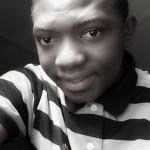 I wrote my first poem in 2010, that was when I was working as a school librarian. I started writing seriously in 2011 when I left the library and moved to Ilorin, North Central Nigeria. I was in love with literature and at that time I was obsessed with the realization that I could ‘create’ my own literature and I kept creating and creating. Today, I am close to completing my undergraduate study of History and International Studies, I think of myself as more of an artist than a writer because I am more interested in writing than being a writer. I write because I love writing and I become sad if I don’t write for a long time. My favourite authors includes Uche Nduka, Ocean Vuong, Sylvia Plath, Pablo Neruda, Tarfia Faizulah, Saeed Jones, Safia Elhillo, Warsan Shire, Phillip B Williams, Meghan Privitello, Fatimah Asghar, Aziza Barnes, Niyi Osundare, Nick Narbutas, Laura M Kaminski, Lauren Camp, Mary McCarthy, Saddiq Dzukogi, David Ishaya Osu, Linda Ashok, Ladan Osman, Gbenga Adesina, Clifton Gachagua, [and] Jumoke Verissimo.
I wrote my first poem in 2010, that was when I was working as a school librarian. I started writing seriously in 2011 when I left the library and moved to Ilorin, North Central Nigeria. I was in love with literature and at that time I was obsessed with the realization that I could ‘create’ my own literature and I kept creating and creating. Today, I am close to completing my undergraduate study of History and International Studies, I think of myself as more of an artist than a writer because I am more interested in writing than being a writer. I write because I love writing and I become sad if I don’t write for a long time. My favourite authors includes Uche Nduka, Ocean Vuong, Sylvia Plath, Pablo Neruda, Tarfia Faizulah, Saeed Jones, Safia Elhillo, Warsan Shire, Phillip B Williams, Meghan Privitello, Fatimah Asghar, Aziza Barnes, Niyi Osundare, Nick Narbutas, Laura M Kaminski, Lauren Camp, Mary McCarthy, Saddiq Dzukogi, David Ishaya Osu, Linda Ashok, Ladan Osman, Gbenga Adesina, Clifton Gachagua, [and] Jumoke Verissimo. I am glad you liked the poem and I am happy to know it said something to you. The first story behind the poem is that one night, I decided to write and I wrote the poem. The second is that I wrote the poem when I was working on equally ‘dark’ poems for a chapbook manuscript. The third is that the poem is the first from a long break from writing, so I was loaded with metaphors when I sat on my desk. I mostly start writing with a feeling, not a story in mind. ‘After’ was meant to be the last poem of the manuscript I was working on, so it was written like a concluding remark.
I am glad you liked the poem and I am happy to know it said something to you. The first story behind the poem is that one night, I decided to write and I wrote the poem. The second is that I wrote the poem when I was working on equally ‘dark’ poems for a chapbook manuscript. The third is that the poem is the first from a long break from writing, so I was loaded with metaphors when I sat on my desk. I mostly start writing with a feeling, not a story in mind. ‘After’ was meant to be the last poem of the manuscript I was working on, so it was written like a concluding remark.


